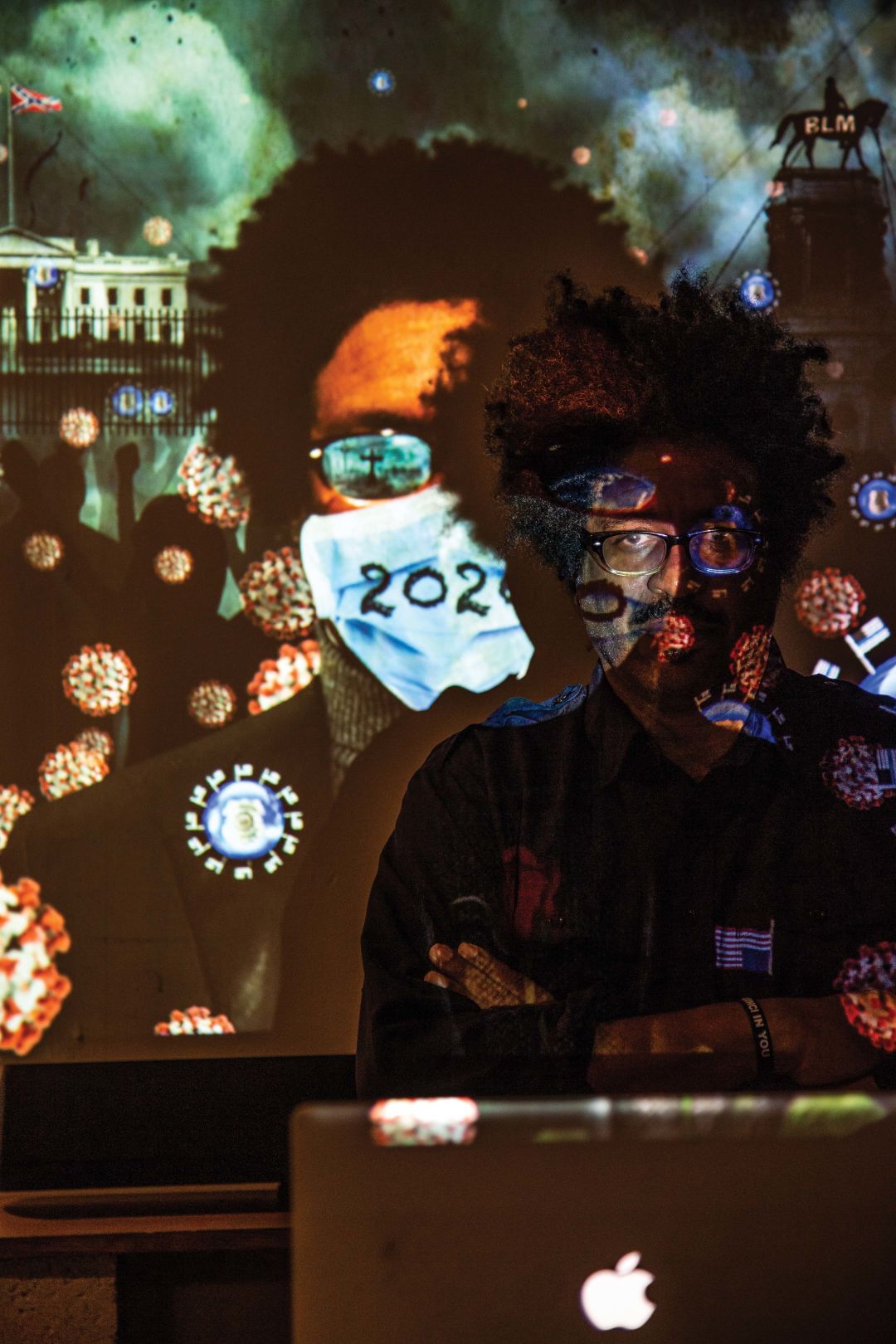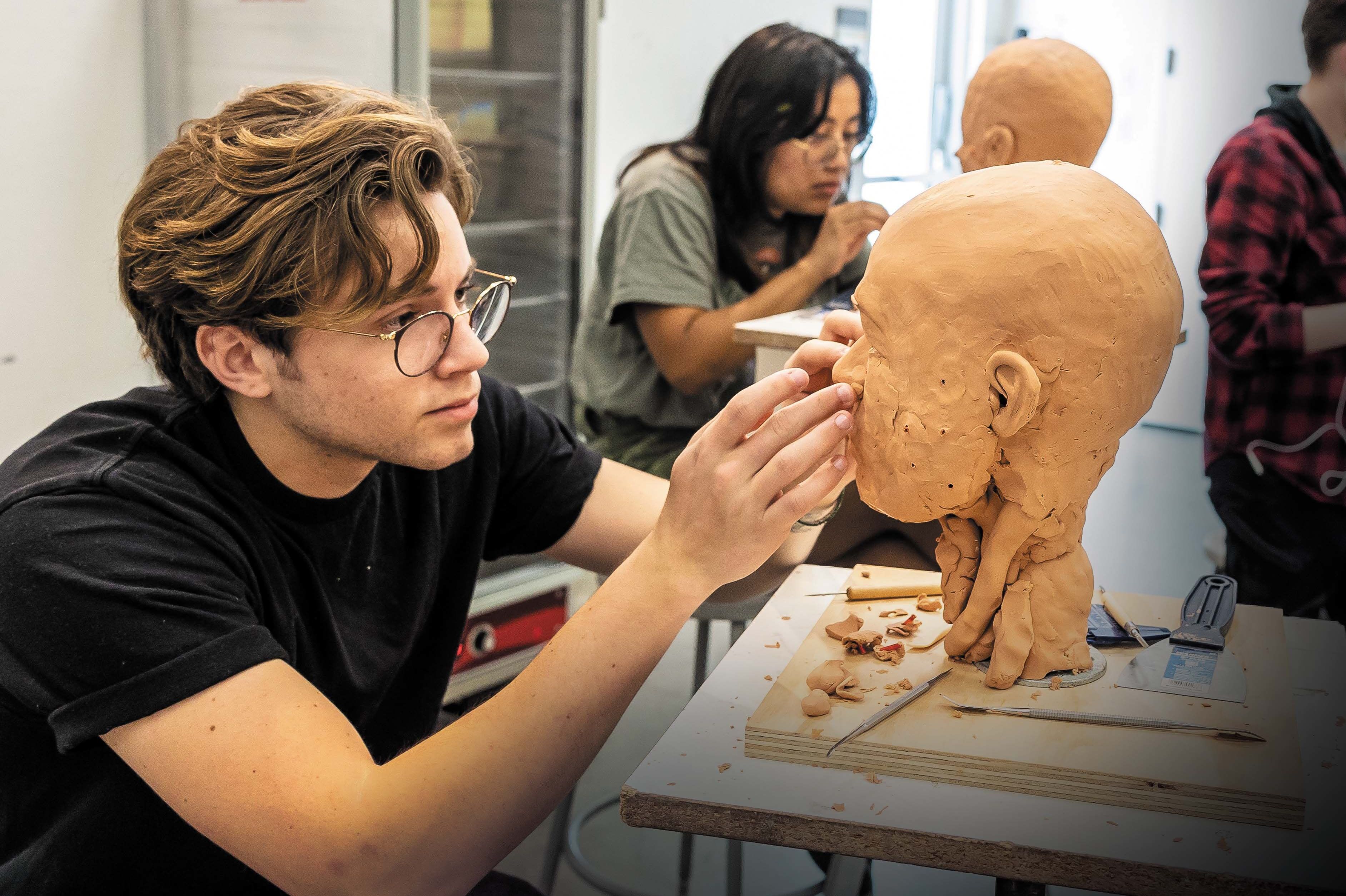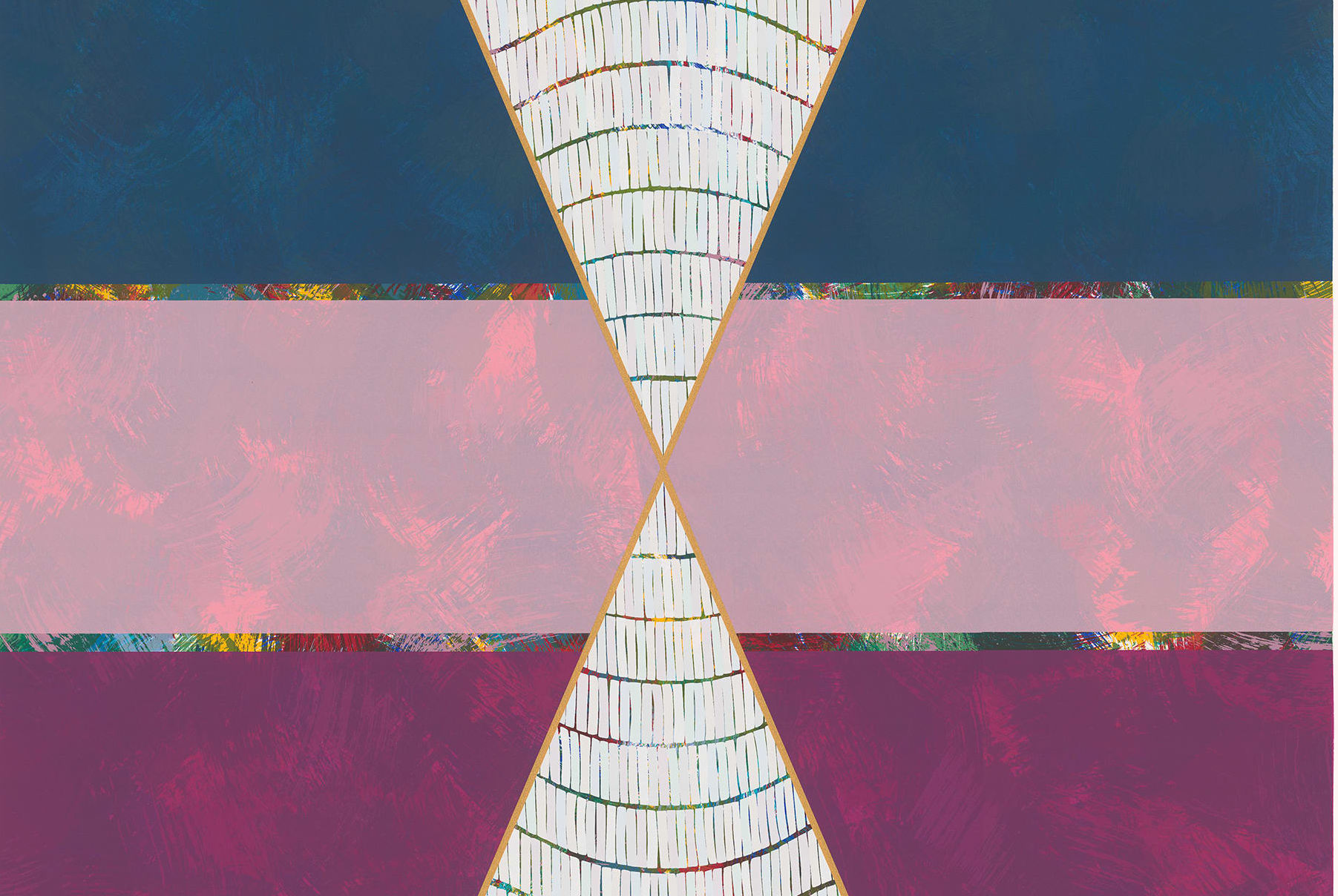Remembering Sarasota Artist John Sims

John Sims
Image: Jenny Acheson
Longtime Sarasota artist John Sims died near his home on Sunday, news that has shocked many of his fellow artists and others in the local arts community, as well as family, friends and acquaintances.
"It is just such an extreme loss for everyone in this community and the people who knew him and were affected by him," says Elizabeth Doud, the curator of performance at The Ringling, where Sims had been an artist in residence. Sims' work often crossed disciplines, combining visual art, performance, photography, filmmaking and activism, and he was unafraid to confront topics like racism, police violence, imagery of the Confederate flag and the Covid-19 pandemic.
"Meeting John, I felt like I was with someone who was a risk taker, someone who was going to be able to carry an idea from wild brainstorming to complete final product," Doud says. "I felt like I was with someone who had an absolute command over his own artistic language but wasn't afraid to push into new areas."
Sims was born in Detroit and attended Ohio's Antioch College, where, after graduating, he created and organized the Cross Cultural Field Program and African-American Culture Week, which later became the long-running AACW Blues and Gospel Fest. He later taught at Ringling College of Art and Design, where his specialty was in math and art, and he presented related exhibitions and lectures around the United States and in Hungary, Slovenia, Israel and Argentina.
Sims’ long-running multimedia project Reclamation Proclamation focused on a series of installations that featured Confederate flag imagery. The work reflected on our country’s racial history and was frequently a lightning rod, drawing negative reactions from people who found it disrespectful and praise from those who found it relevant and astute. He was absolutely committed to it.
"He ran into conflict, because he was not quiet about his beliefs and very much stood behind them," says Steven High, The Ringling's executive director. "He did flag-burning ceremonies all across the country. He did events where they would lynch the Confederate flag. He was a controversial figure, as well as a very rigorous artist."
Sims frequently gave presentations at the Bowery Poetry Club in New York City, collaborated with Amish quilters on SquareRoots: A Quilted Manifesto and had his work featured in publications like The New York Times, USA Today, The Wall Street Journal, The Washington Post and Art in America, among others.
According to the Sarasota Police Department, Sims' cause of death has yet been determined, but the department does not suspect foul play. The Ringling had only just recently acquired two of Sims' pieces, including a video published in September by Sculpture magazine that reflects on the demolition of sculptor John Chamberlain's Sarasota studio.
High says the museum has offered to work with Sims' family to safely store and maintain his work until plans for it can be finalized. "He was a pretty amazing person—very kind, very passionate about his work," says High.
"What got me right away were his small images, wherein he had co-opted the design of the Confederate flag and filled the stars, stripes and background with the most effete colors possible: fuchsias, pinks, pale chartreuse, baby blues, creamy orange... delightfully, wickedly ironic," artist Mike Solomon wrote shortly after hearing the news of Sims' death. "Perfectly conceived. Perfectly executed. Perfectly aimed. This was John, through and through."
In a Facebook post, journalist and author Charlayne Hunter-Gault called Sims "one of the great artists of our time, if not of all time." Many others paid tribute to his work and his activism on social media.
According to Solomon, Sims was "a unique and complex presence. He will surely be missed by so many and his absence in Sarasota will leave a space that can never, ever be filled."



